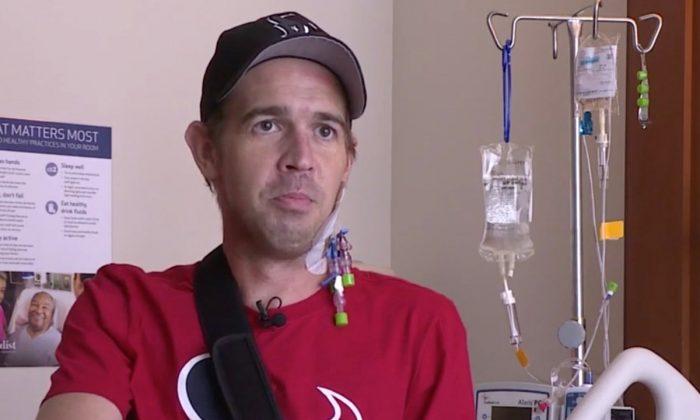A former medic and firefighter in Texas hopped in a kayak to check on his neighbors during Hurricane Harvey rescue efforts, and came out with a strange bacterial infection.
J.R. Atkins paddled through inundated streets looking for people who needed help. He knew there was a risk, having background knowledge of what the waters might carry. He has prior training in floodwater rescue. He credits this knowledge with being able to catch the signs of disease early, KPRC 2 reported.
“On Tuesday, a little tiny bite on me, that by Tuesday night grew to about a nickel size. Next morning it had gone across the bone on the bottom side of my wrist. Four of five hours later it had crossed the wrist and gotten into my hand.” Atkins told KPRC. “And any time that a swell moves across a joint I’ve always been told it’s a bad thing.”
A small bug bite had become infected from the floodwaters, turning a pesky annoyance into a major, life-threatening issue. He discovered he contracted necrotizing fasciitis, also known as flesh-eating disease.
“What I would like people to understand is that I went out in storm water, I didn’t go out in sewage, and so if you look at what’s going on in Houston and you look at the drainage that you’re getting, it’s very different. There’s way worse stuff in there,” Atkins said.
Atkins posted videos and written updates of his rescue efforts, and his subsequent battle with the disease, via Facebook. He put himself in danger in order to keep his Missouri City, Texas neighborhood safe.
“I knew what I was getting into which is the scary thing. I was fully aware that this could happen,” he said.
According to the Centers for Disease Control and Prevention, necrotizing fasciitis is extremely rare. Necrotizing means “causing the death of tissues” and fasciitis refers to “inflammation of a fascia (as from infection or injury).” About 700 to 1100 cases occur per year in the United States. The disease cannot easily be passed from person to person, but usually enters through a break in the skin, usually from “cuts, scrapes, burns, insect bites, or puncture wounds.”
The disease infects the fascia, or connective tissues, and areas around the connective tissues. Treatment includes a combination of surgery and antibiotics given intravenously. The surgery is necessary because if the connective tissue is destroyed, the blood flow will not be able to circulate the antibiotics. The surgery is needed to remove the dead tissue.
Fortunately Atkins caught the illness in time and is already out of intensive care.






Friends Read Free